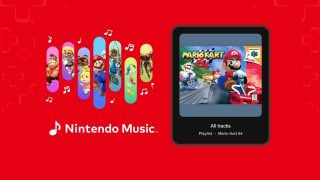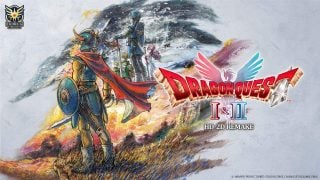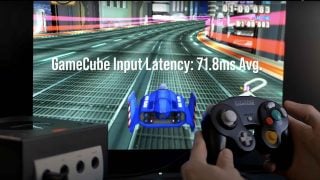Combining Mario with role playing games is one of the most bizarre ideas Nintendo has green lit in its storied history. It takes a weird and wonderful world that’s mostly mute and simple and inserts typical JRPG mechanics and expansive storylines. Despite how weird that sounds, the gamble miraculously works, with many of the Mario RPGs standing tall as shining examples of the genre.
Now Nintendo has crossed over both of its currently ongoing Mario RPGs, Paper Mario and Mario & Luigi, to create Paper Jam for the Nintendo 3DS. Both spin-off series have had their ups and downs over the years, so what happens when you bring them both together?
Worlds collide
Mario & Luigi: Paper Jam begins with Luigi causing an accident that leads to the wafer-thin inhabitants of Paper Mario’s world being transported into the Mushroom Kingdom of the Mario & Luigi series. Chaos quickly ensues, with Paper Toad’s struggling to understand their much smoother surroundings and the minions of Paper Bowser being unleashed upon the relatively peaceful realm.
Thankfully, Paper Princess Peach is on hand to help calm fears, and combined with her three-dimensional counterpart, they send out Mario and Luigi on a new quest to stop the chaos. After finding Paper Mario, the duo becomes a trio, and their journey begins in earnest, with the typical sense of humor fans have come to know and love from Mario RPGs.

While that may scare off some veteran Mario RPG fans from the offset, it has to be said that Paper Jam does a much better job working around this self-imposed limitation than the aforementioned Sticker Star. For one, it has far more dialogue, which in turn gives some oft-overlooked Mario characters, like Bowser Jr. and Toadette, much more personality. It’s just a shame the developers at Alpha Dream don’t show the same level of creativity that made the earlier Mario & Luigi games so endearing.
The game also introduces some enemies that haven’t been in the RPGs before, ranging from the ladybug-like Biddybuds of Super Mario 3D Land to the return of more obscure minions, like Super Mario 64’s Bully. While they aren’t nearly as memorable and unique as the Shroobs or the residents of Boggly Woods, there are plenty of new enemy patterns to learn for veterans of both RPG spin-offs.
Gameplay
Paper Jam is built upon the Mario & Luigi: Dream Team engine, so players who have made their way through the duo’s previous adventure will find it easy to jump back into. You run around wide open areas, doing some minor platforming, solving puzzles, and finding secrets. The biggest wrinkle is the inclusion of Paper Mario himself and the new trio moves.
Whereas Mario and Luigi are controlled independently via the A and B buttons as always, Paper Mario takes up the Y button on the field and in combat. This means everything from world traversal to combat strategies are shaken up, which should please veterans of the series.
The areas you run around in are significantly larger compared to previous games too, which would be a chore to navigate if not for the inclusion of a Dash mechanic, which is mapped to the X button. You can also jump as a group with the same button; plus, if you happen to bump into enemies while running, it acts as a pre-emptive strike. The game also makes you revisit these expansive areas through a separate quest system, although most of these side missions involve Paper Toad wrangling, which quickly becomes redundant. There are at least some fun puzzles mixed in, though, that play with the game’s mechanics in interesting ways.

Papercrafts form-up
The past two Mario and Luigi games have featured moments in the story where the action switches to a much larger scale. In Bowser’s Inside Story you had to turn your DS 90 degrees and fight massive foes as an equally huge Bowser, whereas in Dream Team the honor fell to a giant Luigi. Naturally Paper Jam follows suit, introducing papercraft battles.

Ultimately, these papercraft battles are essentially gimmicks used to break up the game, and despite their prominence in Nintendo’s marketing for the game, they are only a minor part of the adventure.
Battle Cards & amiibo
One of the biggest changes to the battle system already established in Dream Team is the swapping out of the badge mechanic for Battle Cards. These cards act as ways to buff your party, weaken foes, or even inflict damage, without using up a character’s turn. Throughout the game you expand your collection by finding new cards after defeating enemies or buying them from the numerous stores dotted around the Mushroom Kingdom.
You carry a deck of ten cards, which you organize yourself, although it is shuffled and you can only have a maximum of three cards at the ready at any one time. This means there’s an element of luck if you’re in desperate need of a certain card.

Unfortunately, you never really need these amiibo cards, as the fighting isn’t too tough to even require standard battle cards most of the time. Granted, they may come in handy for the Challenge Modes you unlock later in the game, but for casual players this support is inessential, although there’ll no doubt be an appeal for those who love to collect things in games.
Graphics
Not only is a majority of the gameplay in Paper Jam lifted straight from Dream Team, but many of the graphics are identical too, which is somewhat understandable, given how much effort Alpha Dream must have put into making the previous game’s almost seamless 2D-meets-3D art style. Just consider how many animation frames the art department had to make for Mario and Luigi’s 16-directional movement and you can sympathize with how they wanted to make one more game with their current assets.
That doesn’t mean the game is without unique animations though, in fact there are many adorable new dances and poses performed by the two brothers. The level up animation for Mario in particular calls to mind classic Disney, an incredible technical achievement considering it is pixel art.

Sound design
One of the parts of the Mario & Luigi series that never disappoints are the soundtracks, composed by Yoko Shimomura of Super Mario RPG and Kingdom Hearts fame. As ever, her tunes in Paper Jam prove catchy as well as immersive, fitting the environments to a tee.
Special mention must be given to the game’s general sound design too, which is detailed to the point Paper Mario’s jump sound is noticeably different to Mario and Luigi’s. Paper Mario also never speaks gibberish like the other brothers do (a series hallmark at this point), and this muteness gives the wafer-thin plumber a lot of personality, much like an early animation mascot.
Final thoughts
Overall, Mario & Luigi: Paper Jam seems like something of a compromise. It has far more complicated gameplay systems than the likes of Paper Mario: Sticker Star, but compared to earlier games in both the Paper Mario and Mario & Luigi series, the world and story have taken a backseat.
The game is still a fun and breezy adventure, filled with content for those who seek it out, but ultimately it feels like Alpha Dream and Nintendo were playing it a bit too safe to appeal to a wider demographic.
Hopefully in the future we’ll see a return to form for Mario and his story-based escapades, but for right now Paper Jam is an enjoyable, if somewhat by-the-numbers, adventure.
Leave a Comment

